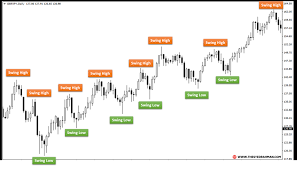How Reciprocal Tariffs Are Reshaping Global Supply Chains in June 2025: The intricate web of global supply chains, once optimized for efficiency and cost-effectiveness, is facing a significant reshuffling in June 2025. A key driver of this transformation is the increasing prevalence of reciprocal tariffs. These aren’t just isolated trade disputes; they represent a dynamic interplay of economic policies that are fundamentally altering how goods are produced, moved, and consumed across the world.
Let’s delve into how reciprocal tariffs are influencing the landscape of global supply chains.
How Reciprocal Tariffs Are Reshaping Global Supply Chains in June 2025: Understanding Reciprocal Tariffs and Their Impact
Reciprocal tariffs are essentially duties imposed by one country on imports from another in response to tariffs already levied by that second country on the first’s exports. This tit-for-tat approach can escalate quickly, leading to a cycle of increasing trade barriers between nations.
The immediate impact of these tariffs is an increase in the cost of imported goods. This ripples through supply chains in several ways:
- Increased Input Costs: Businesses relying on imported components or raw materials face higher expenses, squeezing profit margins or forcing them to raise prices for consumers.
- Disrupted Trade Flows: Tariffs can make certain trade routes economically unviable, leading to a search for alternative suppliers and transportation methods.
- Reduced Competitiveness: Companies heavily engaged in international trade may find themselves at a disadvantage compared to domestic producers in tariff-imposing nations.
The Process of Reciprocal Tariff Implementation
The implementation of reciprocal tariffs typically follows a sequence of actions and reactions:
- Initial Tariff Imposition: Country A imposes tariffs on specific goods imported from Country B, often citing reasons like unfair trade practices, national security concerns, or protecting domestic industries.
- Retaliatory Response: Country B, feeling the negative impact on its exporters, responds by imposing its own tariffs on goods imported from Country A. The selection of goods for retaliation is often strategic, targeting key industries or politically sensitive sectors in Country A.
- Escalation Potential: If neither country backs down, the cycle can continue with further rounds of tariff increases, broadening the scope of affected goods and intensifying the economic impact.
- Negotiation or Stalemate: Eventually, the situation may lead to negotiations aimed at resolving the trade dispute and reducing or eliminating the tariffs. Alternatively, a prolonged stalemate can result in a new normal of higher trade barriers.
In June 2025, we are likely witnessing the ongoing effects of reciprocal tariffs implemented in the preceding years, forcing businesses to adapt to a more fragmented and potentially less efficient global trade environment.
Important Documents and Information
Navigating the complexities of reciprocal tariffs requires businesses to stay informed about several key documents and information sources:
- Official Tariff Schedules: Governments publish detailed schedules outlining the tariffs imposed on various goods. These are crucial for understanding the direct costs associated with imports and exports.
- Trade Agreements and Treaties: Existing trade agreements might contain clauses addressing retaliatory measures or providing mechanisms for dispute resolution. Understanding these frameworks is essential.
- Customs Regulations: Changes in tariff policies often lead to updates in customs procedures and documentation requirements. Businesses need to ensure compliance to avoid delays and penalties.
- Economic Impact Assessments: Reports from international organizations, government agencies, and economic think tanks can provide insights into the broader economic consequences of reciprocal tariffs.
- Industry-Specific Analyses: Trade associations and industry groups often publish analyses detailing the specific impact of tariffs on their sectors.
Eligibility Criteria and Considerations for Businesses
In the face of reciprocal tariffs, businesses are evaluating various strategies, and certain factors determine their ability to adapt:
- Supply Chain Flexibility: Companies with more agile and diversified supply chains can more easily switch suppliers or production locations to mitigate the impact of tariffs.
- Financial Resources: Absorbing increased costs or investing in new supply chain arrangements requires strong financial footing.
- Market Diversification: Businesses heavily reliant on exports to a single country imposing tariffs are more vulnerable than those with a broader market presence.
- Technological Adoption: Utilizing technologies for supply chain optimization, such as predictive analytics and digital platforms, can help businesses navigate disruptions and identify alternative solutions.
- Legal and Trade Expertise: Understanding trade laws, tariff regulations, and dispute resolution mechanisms is crucial for developing effective strategies.
The Long-Term Implications for Global Supply Chains
The continued use of reciprocal tariffs in June 2025 and beyond is likely to have profound long-term implications for global supply chains:
- Regionalization and Localization: Businesses may increasingly favor regional supply chains or bring production closer to home (reshoring or nearshoring) to reduce their exposure to international tariffs.
- Diversification of Sourcing: Companies are actively seeking alternative suppliers in countries not involved in tariff disputes to ensure supply chain resilience.
- Increased Costs for Consumers: Ultimately, the increased costs associated with tariffs are often passed on to consumers in the form of higher prices.
- Slower Global Economic Growth: Trade barriers generally hinder economic efficiency and can lead to slower overall global economic growth.
- Geopolitical Realignment: Trade disputes and the use of tariffs can be intertwined with broader geopolitical tensions, potentially leading to shifts in global alliances and trade relationships.
In conclusion
reciprocal tariffs are not just abstract economic policies; they are a tangible force reshaping the operational realities of global supply chains in June 2025. Businesses that proactively understand these dynamics, stay informed about relevant regulations, and adapt their strategies will be better positioned to navigate this evolving landscape. The future of global trade hinges on the decisions and reactions of nations engaged in this intricate dance of tariffs and counter-tariffs.






